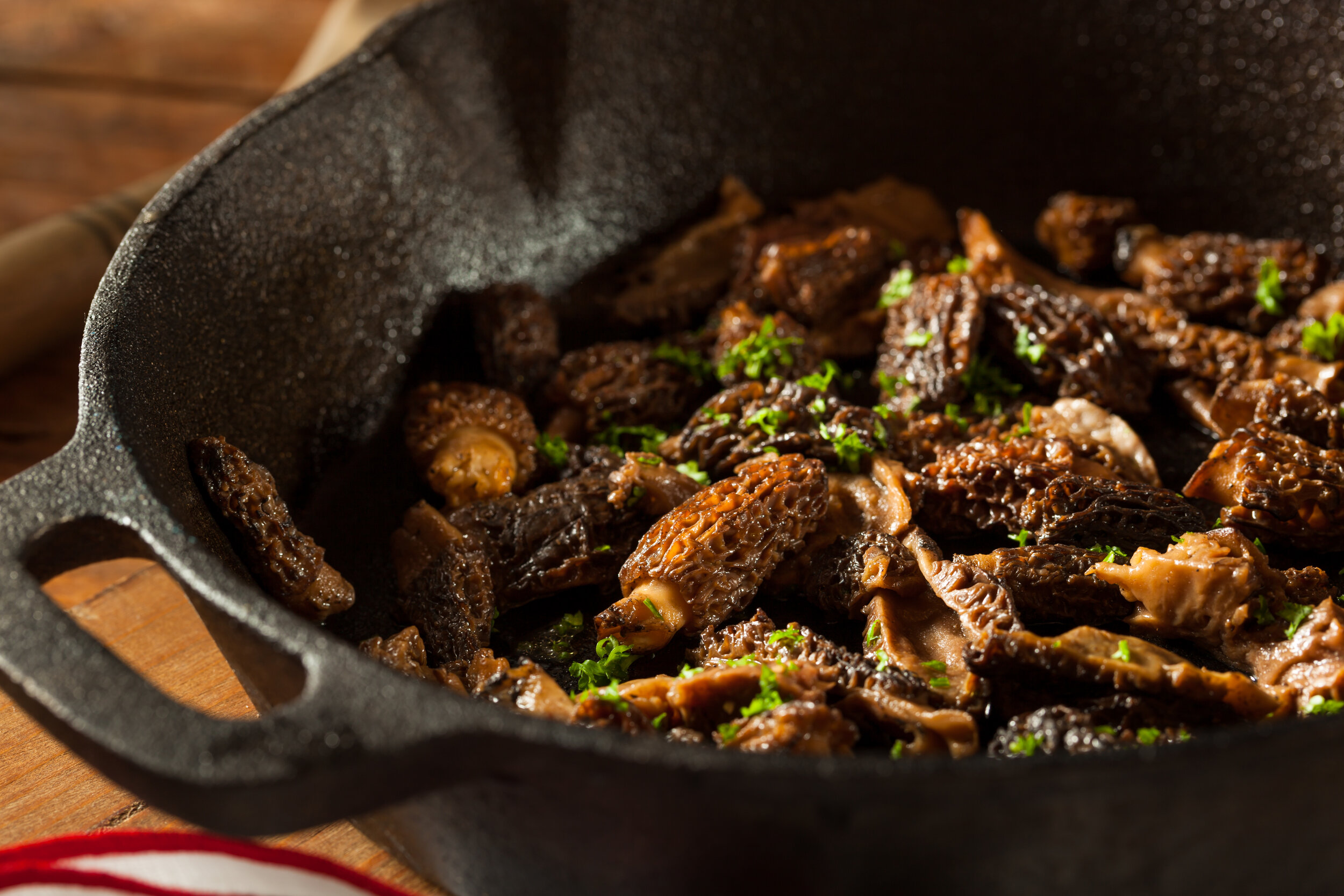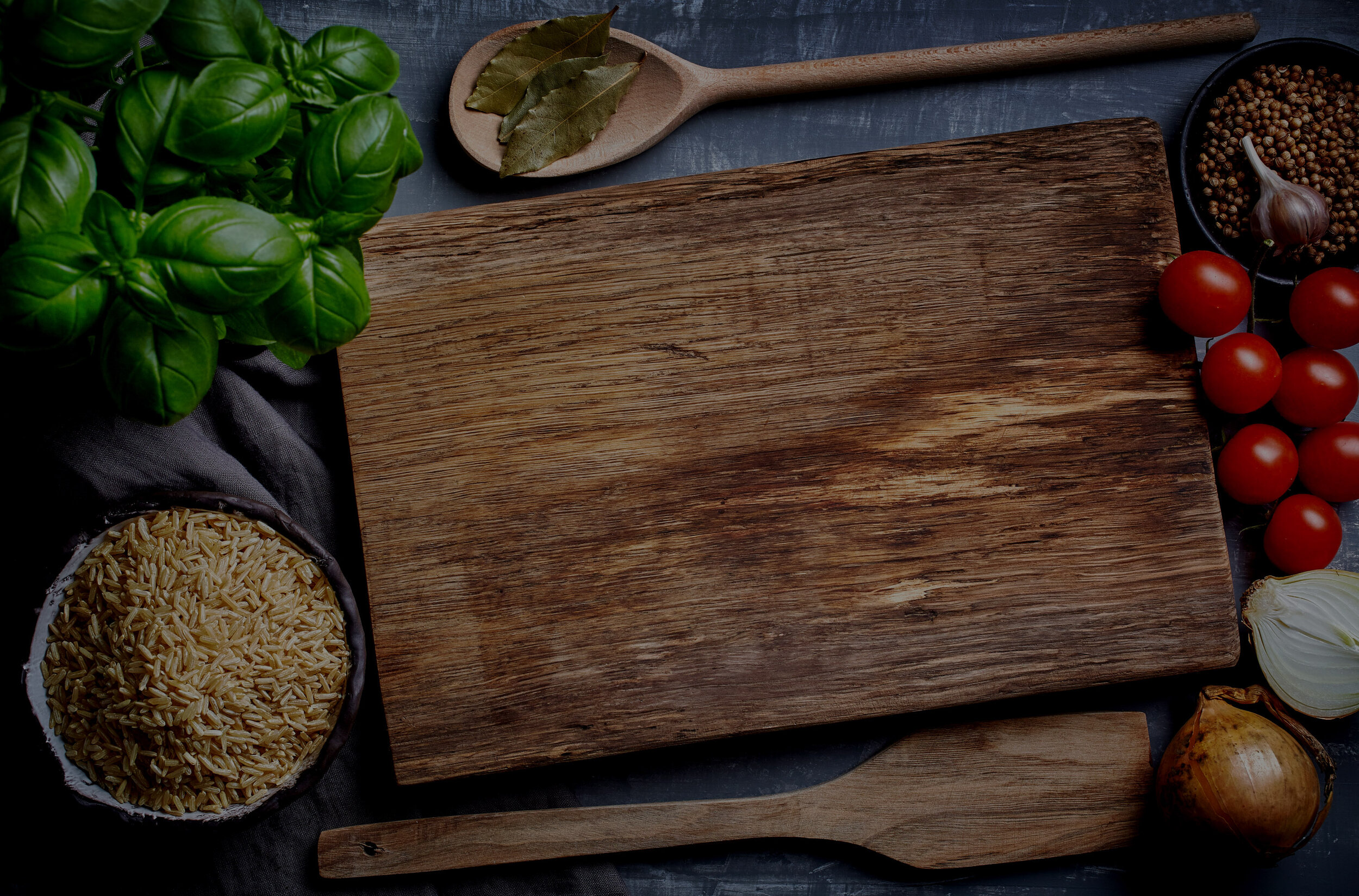
COOKING
COOKING WITH MUSHROOMS OF LAWNS AND GARDENS
Watch out for golf balls disguised as edible mushrooms!
When I began learning about edible city mushrooms, most of the people who taught me were folks who were satisfied to "cook 'em in butter and slap 'em on a steak." But, thanks to the support of enlightened mycophiles, I hung in there and soon I had "mushroom fever." Now I've spent 39 years hunting mushrooms in the forest "without a compass," as a friend says. I think my friend believes I'm crazy for always looking down as I wander the parks and woods, but of course she never turns down an invitation to eat the mushroom dishes I prepare. Ah, hungry friends are so trusting…
Over the years, the most satisfying aspect of mushroom hunting for me has been developing new ways to prepare this unique food. But how to choose and develop recipes for city mushrooms? Well, it turns out that a good recipe for mushrooms of lawns and gardens isn't all that different from a good recipe for a mushroom picked in the forest. Delicious, gourmet wild mushrooms grow in and out of town.
When I'm thinking about how to prepare wild mushrooms, I remind myself that, just as apples vary in flavor and cooking applications, so do mushrooms, regardless of where they grow. In fact, some mushrooms are sweet and can be used in dessert recipes! Just know your mushrooms, trust your taste buds, and experiment.
I try to carry my spirit from the mushroom hunt to the kitchen. I use both not-so-familiar ingredients and old standbys, sometimes applied in fun, new ways that make sense for hunter-gatherers and gardeners.
For instance, in his classic book, Joe’s Book of Mushroom Cookery, Jack Czarnecki suggests a small amount of sweet pepper enhances the flavor of fresh cooked morels. But so does rhubarb with a dash of sugar. This is good to know: No matter how much love and water they give their plants, city gardeners cannot get their bell peppers to fruit during the spring morel season. But in spring the rhubarb bounty can be overwhelming--both in the alley and in the garden!
Some of the mushroom recipes are downright strange, but I am not cavalier in these formulas. All the recipes, which are located after the descriptions and drawings of edible city mushrooms, have been tested for ingredient compatibility and flavor acceptance.
GENERAL PRINCIPLES OF MUSHROOM COOKERY
The number one rule of cooking with most edible mushrooms is to cook them! Some experts believe that most species--including the common supermarket mushroom--possess toxins that may be neutralized by the heat of cooking. Some edible mushrooms are known to upset your stomach when eaten raw. And, in almost all cases, the flavor of the mushroom is enhanced by cooking it thoroughly. So even in salads, I recommend using cooked mushrooms.
Another general principle is to saute, bake or grill mushrooms. Most mushrooms are highly absorbent and get mushy when cooked with water. If you will make a soup, add the liquid after you have lightly sautéed the mushroom so texture will remain intact. Some species, such as the fairy ring mushroom, oyster, and velvet foot, can be steamed lightly without turning into mush, but they become rather tough.
What about other ingredients? What enhances and compliments mushroom flavors? What will completely ruin those precious puffballs you pedaled around the entire city to find? Grains (rice, barley, oats, and quinoa) and pastas are easiest, most reliable droll backdrops that allow subtle mushroom flavors to shine. Leeks, onions, shallots, chives, potatoes, eggplant jicama, tofu, nuts, nut oils, butter, and dairy products also are compatible with all edible mushrooms.
Does the type of salt you use really matter? Yes. Iodized salt can impart an "off" flavor to delicate dishes. In pickling, it can cloud the liquid, darken or alter the flavor of your mushrooms. Additionally, with the exception of pickled and brined products, salted dishes do not keep as long in the freezer and refrigerator. Likewise, many of the ‘designer’ salts contain minerals, that like iodine, might cause undesirable flavor changes when heated. Reserve these mineral salts for table use. Consider using kosher salt in cooking.
Butter or oil? I prefer to use a mixture of canola oil and unsalted butter for my sauté pan. Butter lends flavor. To retain their liquid and shape, most mushrooms should be cooked quickly at a higher temperature, and oil helps keep the butter from burning. (One notable exception is the mountain grown wild mushroom commonly known as the hawk wing. This one must be cooked low and slow to keep it from getting bitter.)
One final caution about harvesting in lawns and parks: Be 100% certain that the area is chemical free. Mushrooms are absorbent – they will soak up and hold any metal, mineral, chemical or fertilizer it can.
If you are interested in setting aside part of your own yard or garden to grow edible mushrooms, Paul Stamets’ firm, Fungi Perfecti, offers indoor and outdoor mushroom garden kits and tools to help get you started.
Now, get picking and cooking! For more ideas on how to cook them -- in addition to my recipes located under the mushroom descriptions -- I've listed some great cookbooks in the Resources section.

BASIC MUSHROOM PREPARATIONS
To help you begin, here are bare bones versions of three "basic mushroom preparations:"
DUXELLES
Also know as Potted Mushrooms, this simple preparation is the beginning of many fine recipes. This is a convenient way of using stems, the blemished parts, and extras you can't eat right away. Duxelles freeze well in ice cube trays or ½ pint containers, allowing you to thaw only what's needed for a recipe. Once thawed, you can use the duxelles as is or drain the liquid and add the mushrooms and onions to flavor omelettes, breads, and spreads. Keep the liquid to flavor soup.
Use morels, field mushrooms, oysters, and parasols for excellent duxelles. You will get a good flavor from inky caps (Coprinus species), but they will get quite mushy -- suitable only for soups or sauces, and it will only freeze well for a few months.
2 T mild olive oil
4 T unsalted butter
2/3 c minced sweet onion (shallots, leeks or combination)
2 c finely chopped mushrooms (see above)
1/4 t salt
1/8 t sugar
In a large frying pan, slowly sauté the onion in the butter & oil until tender. Turn the heat to medium, add the mushrooms, salt, and sugar. Cook and stir until all the liquid is evaporated. If you omit the salt, this recipe can be divided and frozen for up to 18 months without compromising the flavor Additions such as herbs, spices and vegetables impart exciting flavors to basic duxelles, and some cooks insist that true duxelles requires the addition of a small amount of tomato paste.
MUSHROOM POWDER
This is really not a recipe. It is, however, a preparation that's absolutely necessary in any kitchen pantry.
Select dried, imperfect specimens and non-woody stems. Process small batches in a blender or herb grinder on high speed until powdered. Don't remove the lid to the blender right away. Give the powder some time to settle, then store in airtight jars to use later as a flavor enhancer in virtually any dish you desire.
I keep several species on hand in powder form to add to egg, biscuits, soups, sauces, butters and herb salts. Some good mushrooms are oysters, morels, or field mushrooms. I also make an "instant" mix of mushroom powder, dry milk, cornstarch, and spices to carry when I travel. Mixed with cool water then heated to a boil, it is a passable mushroom soup.
The instant soup can be prepared over a campfire, although my idea of roughing it is a hotel without room service. So, I pack the mix when I travel.
MUSHROOM LIQUOR OR EXTRACT
Like mushroom powder, mushroom extract is not made from a ‘recipe’. Yet, it is an important ingredient in cooking. Many Japanese recipes, for example, call for extract of shiitake. Add ½ cup dried mushroom pieces to 1 cup of boiling water. Boil for a 1- 3 minutes to produce the liquor. The dried mushroom bestows a wonderful flavor. To make a super concentrated extract, gently simmer the mushrooms until the liquid is reduced by half. Cool then squeeze all the liquid from the mushroom pulp. (The mushrooms should have no flavor left after simmering, but can be used in dishes for texture.) Reserve the extract for flavoring. It will keep refrigerated for two weeks or freeze for eighteen months. Freeze in ice cub tray and use a few at a time to flavor pan juices, soups, roasts, stews, etc.


